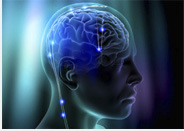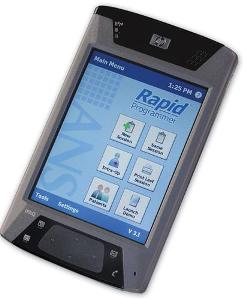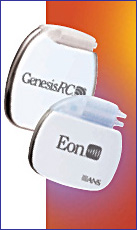| Deep Brain Stimlation for Treatment of Severe Mental Disorders |  |
| Navigation: | Technological Advances | ||
Home What is DBS? Technology of DBS Mental Disorder Treatment Future Work References |
Power and Controllers |
||
One of the most important pieces to increasing the usability of any implantable device is a long lasting power supply. Great strides have been made in this capacity with the NeuroDynamix technology from Advanced Neuromodulation Systems (ANS). This technology can provide a primary cell pulse generator with power for up to 10 years, as seen in the ANS Eon line if DBSs. Subcutaneous recharging of the power cell has also benefited users, as the cell no longer has to be replaced but can be recharged through the skin. The Eon RC uses radio frequency to transfer energy transcutaneously up to 2.5 cm below the skin.
|
ANS's neurostimulators |
||
 |
 |
Physicians and patients also have more control over the stimulation that is occuring in the brain. Changes to current output, equivilant voltage, pulse width, and frequency of the pulse can all be altered within set guidelines without directly modifying the impanted device. These changes are done teleremetrically using devices shown to the left. |
|
Engineering at the Electrode-Brain Interface |
|||
There has been a recent trend toward understanding the mechanisms involved in DBS in order to better design devices and parameters that provide the most effective results in an effecient manner. After the electrodes are implanted there is an acute, transitional, and chronic make-up of the tissue directly surrounding the electrodes, with a trnsition from extracellular fluid to giant cells. In the acute stages, phisiological modulation has a great affect on the local field potentials recorded and sent, thus care should be taken when delivering stimulation in this stage. As the giant cells encroach and the environment becomes more stable, parameters can be adjusted to a more permanent state. By fully understanding these conditions at the EBI, guesswork and trial and error can be eliminated from setting the controls on the neurostimulators. Figure shows increase in potential needed as distance is increased is greater in the chronic EBI [6] |
|||
DBS Mechanisms and Engineering Guidelines |
|||
There are 2 methods as to how Deep Brain Stimulation works:
Research is being done to address different mechanisms that are responsible for these two schools of thought. To reiterate, mechanisms of DBS are absolutely nesseccary if the field is to drift away from general, bulk stimulation and hardware and toward and era where electrodes and stimulation parameters are designed for specific disorders, and eventually individual patients. The following mechanisms are being explored using neurochemical, functional imaging, neural recording and neural modeling experiments.
|
|||
Figure below shows such an experiment where the axonal portion of the neuron is stimulated repeatedly, at the driving frequency, when near the electrode, less so further away and the potential is subthreshold. The cell body also shows little response, indicating that at normal DBS stimulating levels (-3V, .1 ms, 150 Hz), the cell body activity is suppressed. [3] |
|||
| <--Return to Home | |
| University of California, Irvine |
